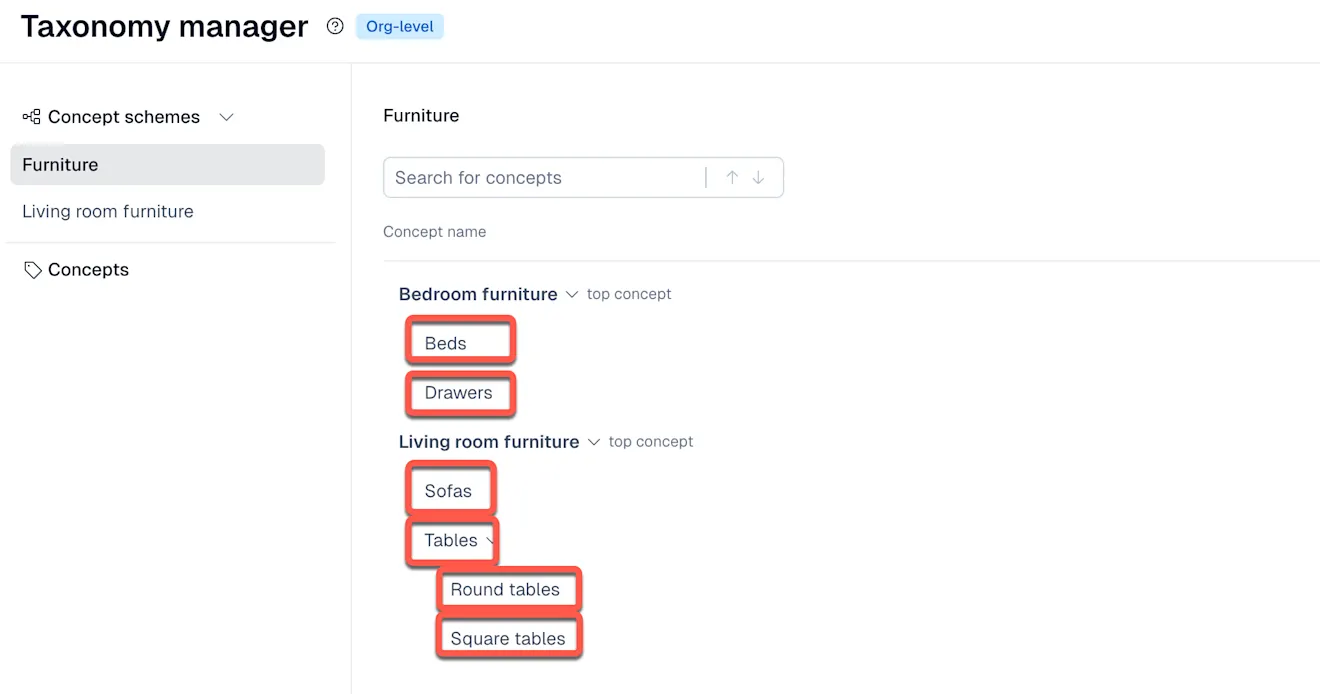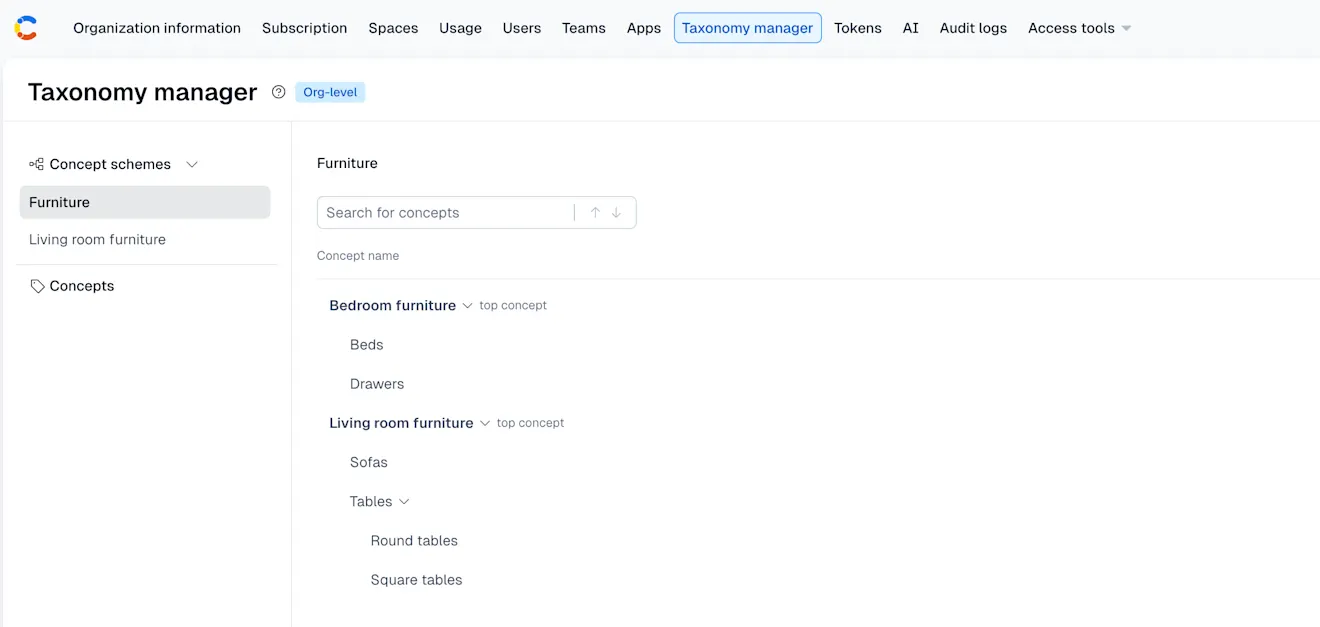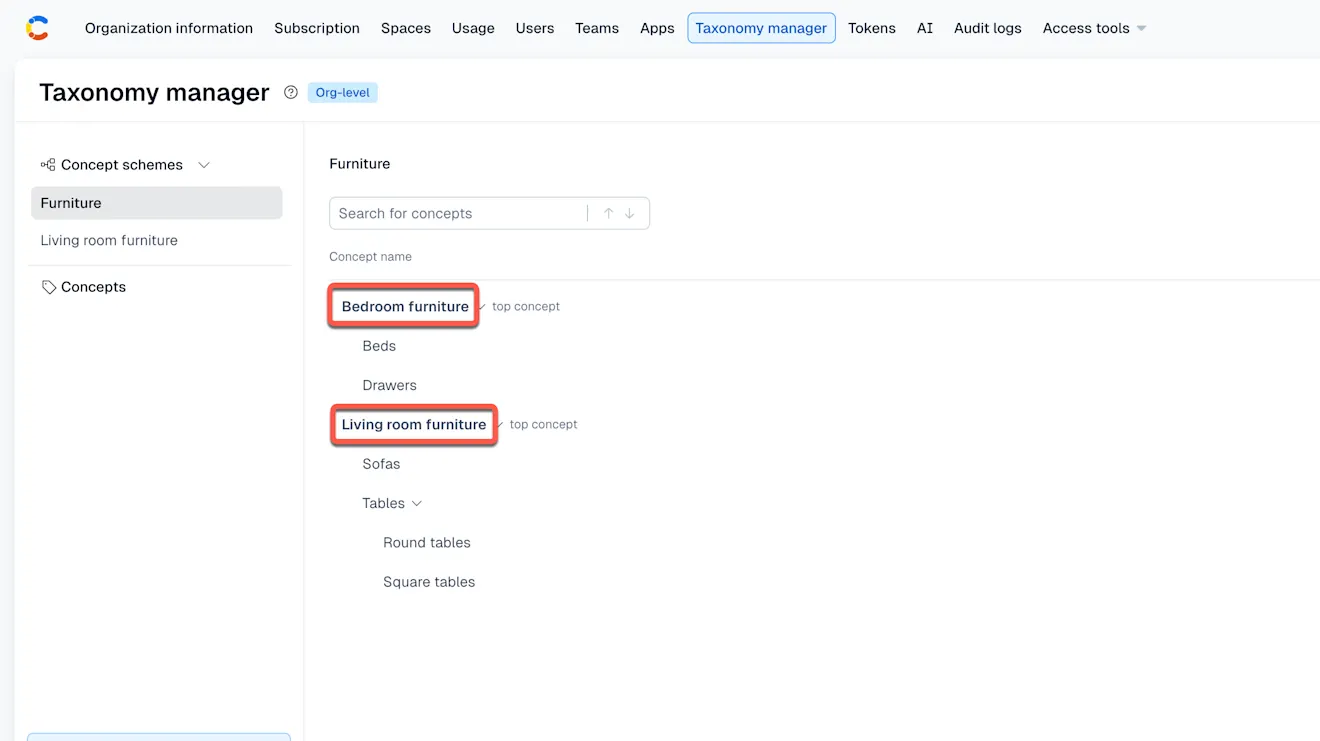Taxonomy glossary
The following glossary provides the list of definitions and examples for the terms used within Contentful's taxonomies.
NOTE: In accordance with the SKOS standard, Contentful classifies these terms as concepts.
Concept
Concepts are the fundamental units (the terms) used to build taxonomies.
You can provide further context and meaning by editing their properties. Relationships with other concepts can be added, to show associations between them and build hierarchies of concepts.

Broader concept
This is a parent concept of another concept within a hierarchy. “Broader” is used here because it has a broader meaning.

Related concept
These are concepts that are associated with another concept, but do not have a hierarchical connection.

Concept scheme
Concept schemes are a way to further organize and categorize your concepts. They act like folders for grouping concepts.
Concept schemes can be created and deleted without affecting the underlying concepts.

Top concept
The "Top concept" label is used only within concept schemes. It is used to denote concepts at the top level of the concept scheme.
There can be multiple top concepts within the same concept scheme.

NOTE: Top concepts cannot be subconcepts of any other concepts in the same concept scheme. For example, if there are three concepts, each a subconcept of the previous one: Bedroom furniture > Beds > Double Beds.
Beds could be added as a top concept of the Home Products concept scheme. However, Bedroom furniture cannot then be added to Home Products because Beds (a subconcept) is already a top concept.
Subconcept
The term "subconcept" just refers to concepts that have a broader relationship with another concept.
In other words, “subconcept” is a name given to concepts that sit below another (their broader concept) in the hierarchy.
URI (Unique Resource Identifier)
URIs (Unique Resource Identifiers) are optional identifiers for concepts and other elements in your taxonomy system. They are a globally unique ID that helps ensure consistency and unambiguous reference across different systems and applications (such as 3rd-party taxonomy software).

NOTE: URIs are optional and can be added at any time. If you’re unsure whether your use case requires them, it’s safe to omit them. Internally, every concept and concept scheme is still given a Contentful ID automatically.
Preferred labels
The preferred label is the term or phrase that is considered most appropriate and widely accepted to represent the concept within your taxonomy. In other words, this is the primary name of your concept.
Alternative labels
Alternative labels are additional terms that express the same concept.

Hidden labels
Hidden labels can include misspelled variants of the concept or colloquialisms for the concept used by other cultures or groups.
Hidden labels are not meant to be shown directly to users, but are used (like the other labels) when searching for matching concepts.

Definition
Provide a definition for clarifying a concept's meaning by describing its characteristics, typical use cases, or etymology.

Notations
Notations uniquely identify the concept. They are not normally natural language words, but formal designations, such as item or classification codes.

History note
History notes are used to record the history of any changes to a concept. These notes can also be used as a 'changelog' for a concept.

Editorial note
For recording editorial changes to the concept. These notes can be useful for administrative tasks, such as edits or reviews of the concept.

Scope note
Scope notes are an explanation or statement on the intended uses of a concept.

Example note
These are notes where you can provide different examples or use cases of the concept.

NOTE: General documentation or information about the concept. Notes are a way to include more details that might be helpful for users or maintainers of the taxonomy without cluttering the primary label.